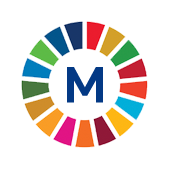 11.1.1 Proportion of urban population living in slums, informal settlements or inadequate housingMetadataPeriod: Every two yearsYear: 2025 |
 11.1.1 Proportion of urban population living in slums, informal settlements or inadequate housingMetadataPeriod: Every two yearsYear: 2025 |
| METADATA |
| Indicator information |
| Definition and methodology |
| Data source type and data collection method |
| Notes |
| ID of global indicator |
| Metadata update |
| Global metadata |
| Indicator information | Top |
| Indicator | |
11.1.1 Proportion of urban population living in slums, informal settlements or inadequate housing | |
| Global indicator name | |
11.1.1 Proportion of urban population living in slums, informal settlements or inadequate housing | |
| Target | |
11.1 By 2030, ensure access for all to adequate, safe and affordable housing and basic services and upgrade slums | |
| Goal | |
Goal 11. Make cities and human settlements inclusive, safe, resilient and sustainable | |
| Definition and methodology | Top |
| Definition | |
This indicator measures the proportion of urban population living in slums, informal settlements or inadequate housing. | |
| Methodological explanations | |
A slum household is defined as a group of individuals living under the same roof lacking one or more of the following conditions:
1. Lack of access to improved water source,
Inadequate Housing – Article 25 of the Universal Declaration of Human Rights includes housing as one of the components of the right to adequate standards of living for all. For housing to be adequate, it must provide more than four walls and a roof, and at a minimum, meet the following criteria:
1. Legal security of tenure, which guarantees legal protection against forced evictions, harassment and other threats; | |
| Method of calculation | |
The indicator considers two components to be computed as follows:
| |
| Unit of measure | |
% | |
| Available disaggregation | |
| Territorial level | |
Republic of Serbia | |
| Data source type and data collection method | Top |
| Data source | |
United Nations Human Settlements Programme | |
| Periodicity of data collection | |
Every two years | |
| Notes | Top |
| ID of global indicator | Top |
C110101 | |
| Metadata update | Top |
| 4/6/2025 | |
| Global metadata | Top |
https://unstats.un.org/sdgs/metadata/files/Metadata-11-01-01.pdf | |